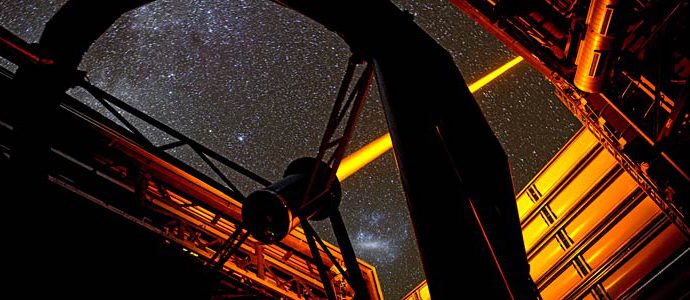
Люди могут достигнуть других звезд, если сумеют использовать лазеры
Новости науки и техники 28.02.2017 Комментариев к записи Люди могут достигнуть других звезд, если сумеют использовать лазеры нетЕсли людям удастся создать такой космический корабль, который будет двигаться со скоростью 5% от скорости света, то мы сможем достичь Альфа Центавра не за 95 лет, а за сутки. Это реально, если научиться использовать энергию света, говорят ученые.
На сегодняшний день самый быстрый космический аппарат, который когда-либо был запущен, – зонд New Horizons, который имел скорость старта около 58000 км / ч. Даже после получения гравитационного толчка от облета Юпитера, зонд долетел к Плутону со скоростью лишь 48000 км / ч. Самый быстрый космический аппарат, покинувший Солнечную систему, — Voyager 2, который использовал гравитационные пролеты четырех внешних планет и вылетел из системы со скоростью 60000 км / ч. При таких показателях полет к Альфа Центавра займет 78 тысяч лет.
Проект Starshot предлагает альтернативную версию межзвездных космических путешествий. Разработчики считают, что если сверхлегкий корабль будет разогнан до 5% скорости света с помощью мощных лазеров, то путешествие в другую систему станет очень быстрым. Идея описана в статье, опубликованной в Astrophysical Journal.
New Laser Improves VLT’s Capabilities
A new and more powerful laser has successfully completed testing at ESO’s Paranal Observatory and has been formally accepted today. This new laser source is called PARLA and forms a vital part of the Laser Guide Star Facility (LGSF) at ESO’s Very Large Telescope (VLT).
The laser is used to generate an artificial star about 90 kilometres up in the atmosphere [1]. By creating and observing such a bright point of light astronomers can probe the turbulence in the layers of the atmosphere above the telescope. This information is then used to adjust deformable mirrors in real time in order to correct most of the disturbances caused by the constant movement of atmosphere and create much sharper images.
The new laser will greatly improve the reliability and flexibility in operating the LGSF. It uses similar technology to that which will also be employed in the four lasers of the future Adaptive Optics Facility currently under development at ESO. The new laser delivers up to 7 Watts of output and is very stable.
During the commissioning and for demonstration purposes, some challenging targets were successfully observed using the new laser in conjunction with different VLT instruments. These included the dwarf planet Haumea and its moons and the peculiar radio galaxy Centaurus A.
Источник: http://www.americaru.com/news/109241




Leave a comment
You must be logged in to post a comment.